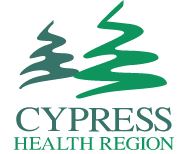Cypress Regional Health Authority will consolidate with other 11 RHAs
Saskatchewan will move to a single Provincial Health Authority with a professional Health Authority Board as part of a sweeping series of consolidation changes for the existing 12 Regional Health Authorities.
Saskatchewan Health Minister Jim Reiter approved all of the recommendations proposed by the three-person Saskatchewan Advisory Panel on Health System Structure during an announcement on January 4. The Advisory Panel included Swift Current’s Tyler Bragg.
Reiter said the consolidation, which was the focal recommendation in the Saskatchewan Advisory Panel on Health System Structure Report, will reduce administration and duplication across the health system, while allowing the new authority to better coordinate and standardize health services, with a focus on improving patient quality of care.
“What we hope it’ll mean is a more effective way of delivering healthcare. And if we do this in a proper manner, the average person frankly won’t notice the difference. The average person is worried about front line healthcare, not management structure,” Reiter said during a press conference on Wednesday.
The report made a series of recommendations towards a goal of optimizing and integrating patient-centred care, while also significantly reducing administration costs in Saskatchewan’s healthcare system.
“One Provincial Health Authority that is focussed on better co-ordination of health services across the province will improve the quality of care patients receive,” Reiter said in announcing the changes. “It will also reduce administration and duplication across the health system.”
“This change represents a consolidation of administration, not a centralization of services,” he added. “Our goal is better co-ordination between the health services provided in different areas of the province.”
Advisory Panel member Dr. Dennis Kendel explained the three-person Panel made their recommendations following the receipt of over 300 submissions, and over 30 face-to-face consultations with key partners and stakeholders.
“We believe one single Regional Health Authority, a Provincial Health Authority, focused on seamless care delivery and integration of services, will improve the patient experience,” Dr. Kendel said. “It supports our systems commitment to think and act as one, and the potential to improve system and strategic planning performance by actually being one organization.”
The report promotes the benefits of a standardized approach to services such as information technology, procurement, supply chain, human resource management, financial services, payroll services and health provider recruitment.
The last major change to health regional governance occurred in 2002 when the province moved from 32 regions to the current 12 Regional Health Authority model. However, it was pointed in the report that the current structure defines 12 autonomous Regional Health Authorities that have no accountability to one another, but each is individually responsible to the Minister of Health. Instead of 12 separate senior administrative and clinical leadership teams, the consolidation will permit leadership to support a provincial view and system vision of service delivery.
“Reorganization of the health care system creates a unique opportunity to refocus priorities and align strategic and operational decision making to ensure we improve the patient experience of care,” the report stated.
“We have a collective responsibility to ensure the resources provided through our tax dollars are meaningfully invested in the system to achieve the greatest value for our patients. We believe that by implementing a structure as outlined in this report, we will enable enhanced integration of the patient experience, provider participation and administrative leadership to inform ongoing health system improvement, allow a more seamless patient care experience and achieve administrative efficiencies within the system.”
The report recommended to pursue clinical service consolidations through a trio of methods:
– Integrating diagnostic services (including laboratory and diagnostic imaging) across the province, including services delivered by the Saskatchewan Disease Control Laboratory (SDCL);
– Optimizing the organization of Emergency Medical Services (EMS) through the consolidation of all planning, dispatch and delivery;
– Coordinating tertiary acute care services to reduce duplication and variation, and improve consistency and quality of service delivery.
In order to better coordinate care across the province, the report recommends the establishment of four service integration areas, but allows the province for flexibility and a variation of three to six service areas. This will be one of the focal points the new governance model which could be enacted as early as this fall.
“In our report we’ve recommended the creation of these service integration areas, and it’ll take some more thought as to exactly how many areas there should be, and those service integration areas will work to make the care more integrated and seamless than it is now,” Dr. Kendel said.
Implementation planning has already begun, and a comprehensive plan is being developed to work through the critical implementation details to enact this significant change.
Saskatchewan benefits from being one of the final jurisdictions in Canada to pursue a healthcare system consolidation, and other provinces experienced difficulties in part by doing too much too quickly.
“We want to do this quickly, but it’s also important that we get this right,” Reiter said. “This change means a reduction of administration, it does not mean a reduction or centralization of healthcare services.”
“While we want to do this as quickly as we possibly can – we want people to know what direction we’re working, that’s why we’re releasing this today – we want to get it right. We don’t want to make mistakes because it’s rushed.”





